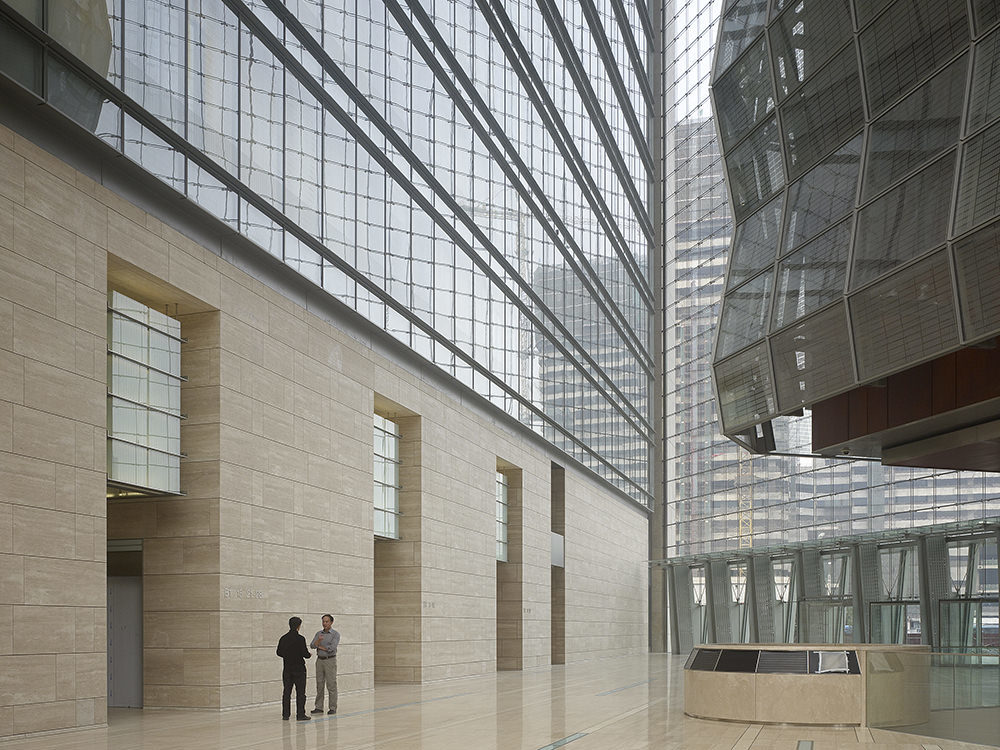
Photo © Tim Griffith
How do you hang one building inside another? More important, why try? Faced with a prominent client and a prominent corner plot on Beijing’s Second Ring Road, Skidmore, Owings & Merrill found a reason—and a way. The result astounds, yet the rationale for suspending a large chunk of China Poly Group Corporation’s 1 million-square-foot headquarters inside the other was not architectural theatrics but rather a question of functional needs. The energy, defense, and real-estate conglomerate was looking for a powerful civic presence and a mix of uses, starting with shops and a subway entrance. Known locally for a concert hall and a collection of Chinese antiquities, the company also hoped to include a public museum.
With echoes of Kevin Roche John Dinkeloo and Associates’s Ford Foundation headquarters in New York, SOM’s scheme evolved around a glass-enclosed atrium. It’s embraced by an L-shape office block, each leg of which turns its back on Beijing’s hot sun with the help of a travertine screen. To keep the atrium as public as possible, it’s fronted by one of the world’s largest cable-net glass curtain walls.
And the volume suspended inside? Well, something had to hold up that huge curtain wall, and bulky trusses seemed inelegant, SOM’s structures-savvy design partner Brian Lee says. That’s where the shops, restaurants, and fantastic collection of Buddhas and zodiac figures came in: They’d be housed in a glass box that would serve as a counterweight. “We conceived it as a glowing lantern in the atrium, ” Lee says. “People actually pass underneath.” His lantern hangs from two V-shape sets of cables, tied together with colossal rocker mechanisms. Both double as rigging to secure the curtain wall. To get the heroic engineering right, SOM employed everything from elasto-plastic analysis software to basswood mock-ups; in the latter, drafting-table wire stood in for the cables.